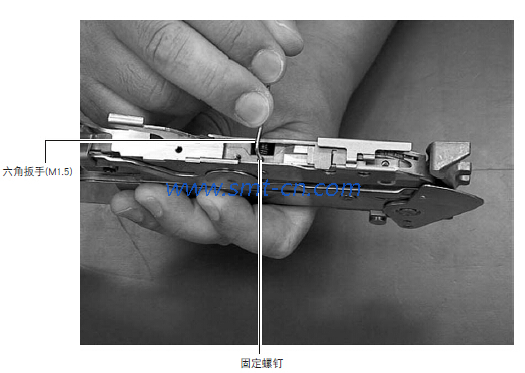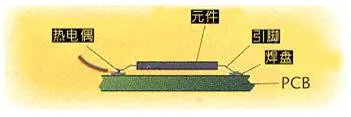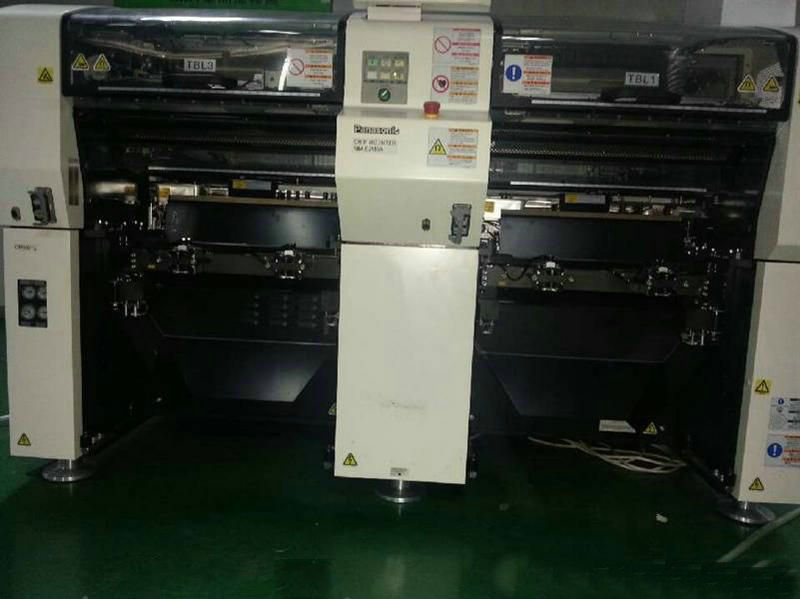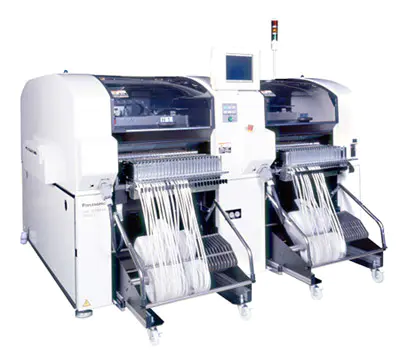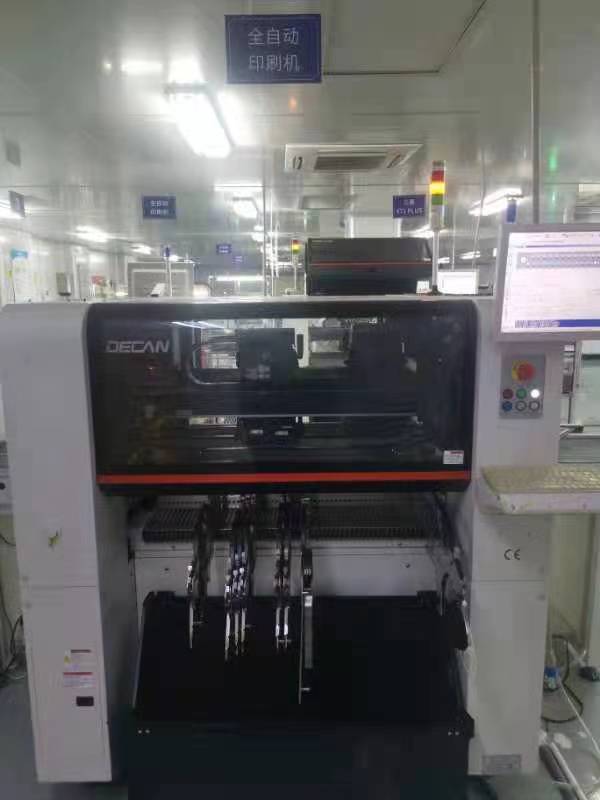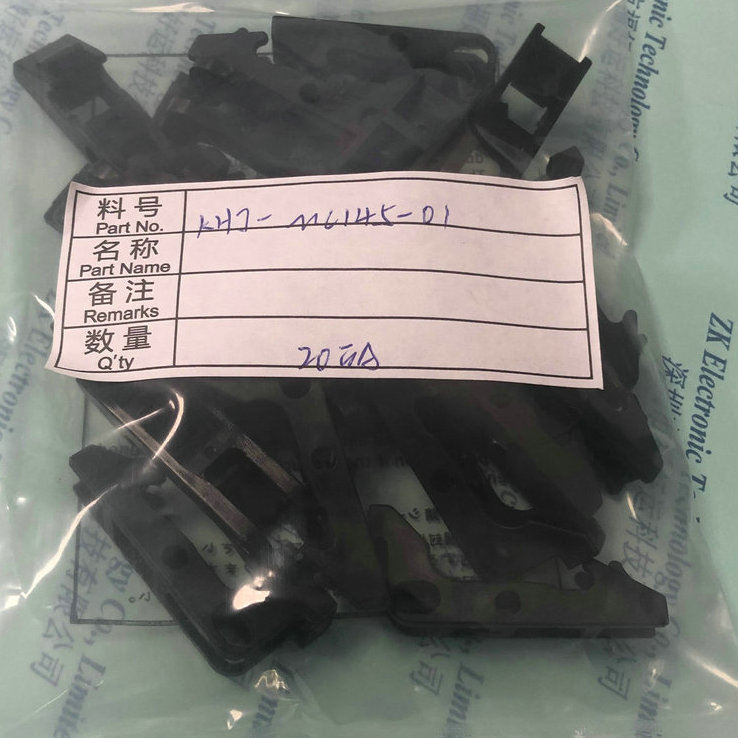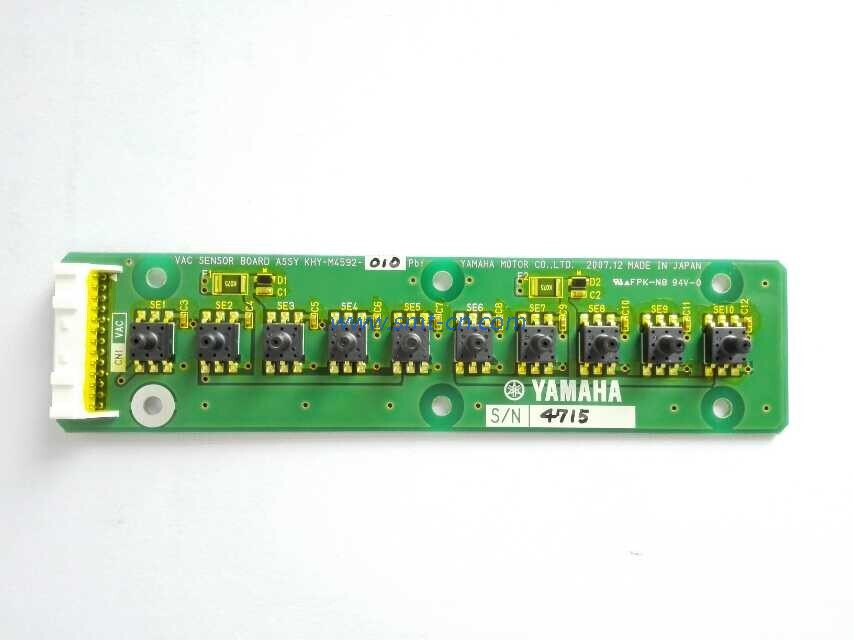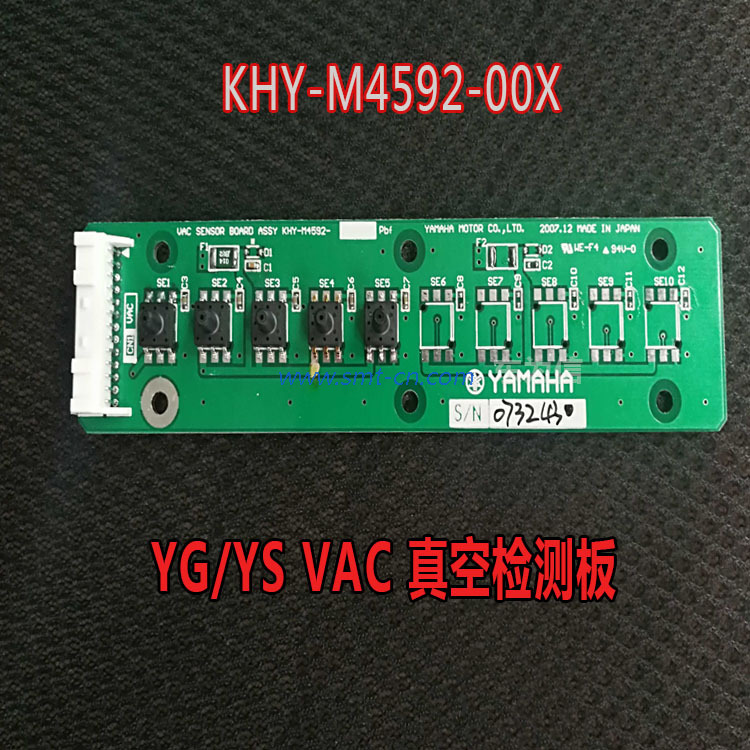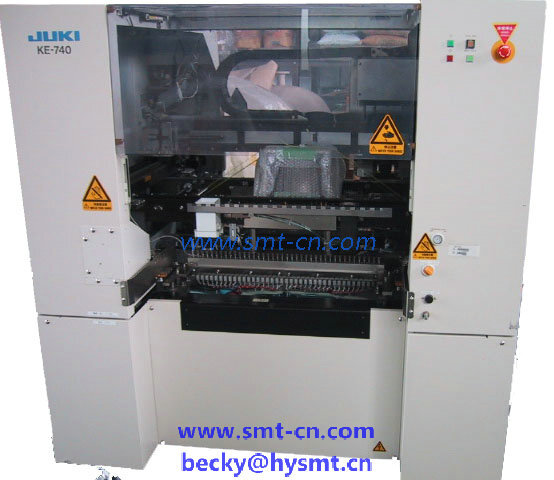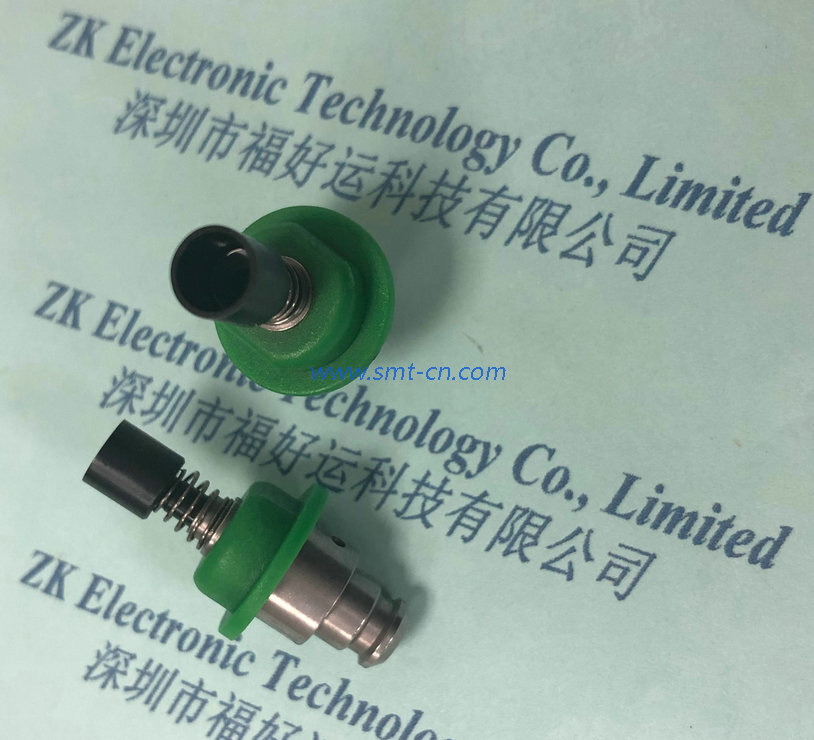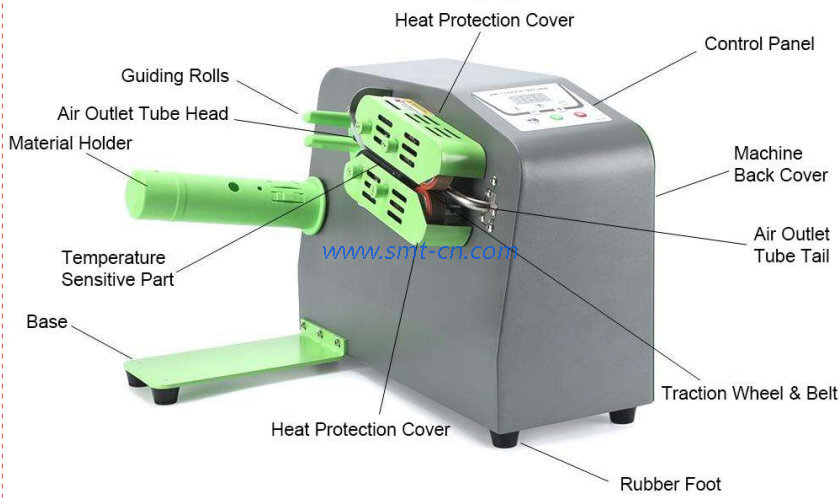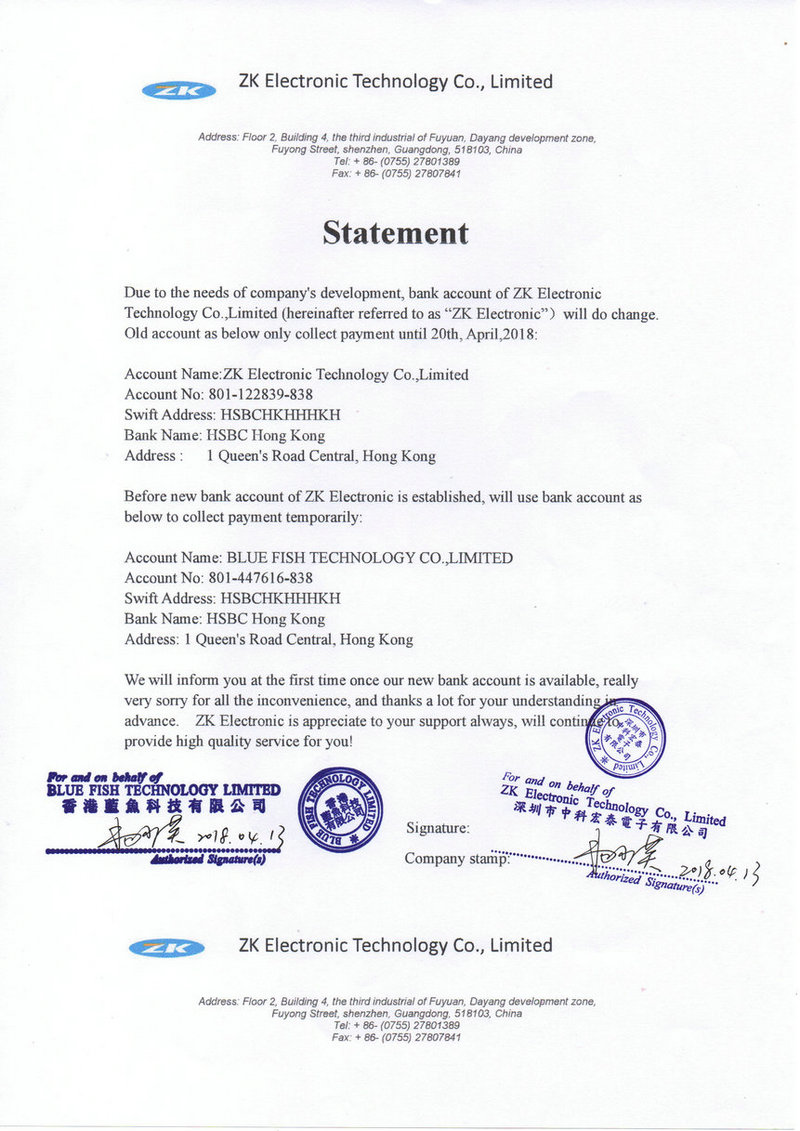NEWS
SMT reflow soldering process details
- Categories:Industry News
- Author:Becky Su
- Origin:
- Time of issue:2024-01-13 10:37
- Views:
(Summary description)SMT reflow soldering process details Reflow soldering is the primary board-level interconnection method used in the SMT assembly process, and it offers an excellent combination of desired soldering characteristics, including ease of processing, broad compatibility with a wide range of SMT designs, high solder reliability, and low cost. However, at a time when reflow soldering is being used as an important SMT component-level and board-level interconnection method, it is also being challenged to further improve solder performance. In fact, the ability of reflow soldering technology to withstand this challenge will determine whether solder paste can continue to be the premier SMT soldering material, especially with advances in ultra-fine pitch technology. Below we will discuss some of the major issues that affect the improvement of reflow soldering performance. Undersoldering Undersoldering is the formation of solder bridges between neighboring leads. Typically, all the factors that can cause solder paste slumping can lead to under-soldering, these factors include: 1, too fast temperature rise; 2, the thixotropic properties of the paste are too poor or the viscosity of the paste recovers too slowly after shear; 3, metal loading or solids content is too low; 4, powder particle size distribution is too wide; 5; flux surface tension is too small. However, slumping does not necessarily cause undersoldering, and in soft fusion, where the melted undersolder has the potential to disconnect under the impetus of surface tension, the phenomenon of solder loss will make the undersoldering problem worse. In this case, the excessive amount of solder gathered in a certain area due to the loss of solder will make the molten solder become too much to break. In addition to the factors that cause solder paste to slump, the following factors are also common causes of under-soldering: 1, relative to the space between the solder joints, the solder paste melt too much; 2, the heating temperature is too high; 3, the paste is heated faster than the board; 4, the flux wetting rate is too fast; 5, the flux vapor pressure is too low; 6; The solvent component of the flux is too high; 7, the flux resin softening point is too low. Second, intermittent wetting of the solder film intermittent wetting is that there is water on the smooth surface, this is due to the solder can be adhered to most of the solid metal surfaces, and in the melted solder layer hidden under the cover of some of the un-wetted points, therefore, in the * first time to cover the surface with melted solder, there will be intermittent wetting phenomenon. The method of eliminating the intermittent wetting phenomenon is: 1, reduce the soldering temperature; 2, shorten the residence time of soft melt; 3, the use of flowing inert atmosphere; 4, reduce the degree of contamination. Third, low residue for the soft fusion process without cleaning, in order to obtain the decorative or functional effects, often require low residue, the functional requirements of examples include "through the flux residues tested in the circuit to probe the test cladding layer and in the insertion of joints and cladding layer or in the insertion of joints and soft fusion soldering near the point of contact between the through-hole of the implementation of electrical contact "Higher amounts of flux residue often result in excessive residue coverage of the metal surfaces to be electrically contacted, which prevents the establishment of an electrical connection, a growing concern in the face of increasing circuit densities. Obviously, low residue solder pastes which do not require cleaning are an ideal solution to this requirement. However, the associated soft-melt necessity complicates the problem. In order to predict the soldering performance of low-residue solder pastes in different levels of inert soft-melt atmospheres, a semi-empirical model is proposed, which predicts that the soldering performance improves rapidly as the oxygen content decreases, and then gradually levels off. Experimental results show that the solder strength and the wetting ability of the solder paste increase as the oxygen concentration decreases, and furthermore, the solder strength increases with the increase of the solids content in the solder flux. increase. The model presented by the experimental data is comparable and provides strong evidence that the model is valid and can be used to predict the solder properties of solder pastes and materials, therefore, it can be asserted that an inert soft melting atmosphere should be used in order to successfully employ low residue solder without cleaning in the soldering process. Fourth, the gap The gap is the absence of a solder joint between the component leads and the circuit board solder joints. Generally, this can be attributed to the following four reasons: 1, insufficient solder deposition; 2, poor lead coplanarity; 3, insufficient wetting; 4, solder loss dates
SMT reflow soldering process details
(Summary description)SMT reflow soldering process details
Reflow soldering is the primary board-level interconnection method used in the SMT assembly process, and it offers an excellent combination of desired soldering characteristics, including ease of processing, broad compatibility with a wide range of SMT designs, high solder reliability, and low cost.
However, at a time when reflow soldering is being used as an important SMT component-level and board-level interconnection method, it is also being challenged to further improve solder performance. In fact, the ability of reflow soldering technology to withstand this challenge will determine whether solder paste can continue to be the premier SMT soldering material, especially with advances in ultra-fine pitch technology.
Below we will discuss some of the major issues that affect the improvement of reflow soldering performance.
Undersoldering
Undersoldering is the formation of solder bridges between neighboring leads.
Typically, all the factors that can cause solder paste slumping can lead to under-soldering, these factors include:
1, too fast temperature rise;
2, the thixotropic properties of the paste are too poor or the viscosity of the paste recovers too slowly after shear;
3, metal loading or solids content is too low;
4, powder particle size distribution is too wide;
5; flux surface tension is too small. However, slumping does not necessarily cause undersoldering, and in soft fusion, where the melted undersolder has the potential to disconnect under the impetus of surface tension, the phenomenon of solder loss will make the undersoldering problem worse. In this case, the excessive amount of solder gathered in a certain area due to the loss of solder will make the molten solder become too much to break.
In addition to the factors that cause solder paste to slump, the following factors are also common causes of under-soldering:
1, relative to the space between the solder joints, the solder paste melt too much;
2, the heating temperature is too high;
3, the paste is heated faster than the board;
4, the flux wetting rate is too fast;
5, the flux vapor pressure is too low;
6; The solvent component of the flux is too high;
7, the flux resin softening point is too low.
Second, intermittent wetting of the solder film intermittent wetting is that there is water on the smooth surface, this is due to the solder can be adhered to most of the solid metal surfaces, and in the melted solder layer hidden under the cover of some of the un-wetted points, therefore, in the * first time to cover the surface with melted solder, there will be intermittent wetting phenomenon.
The method of eliminating the intermittent wetting phenomenon is:
1, reduce the soldering temperature;
2, shorten the residence time of soft melt;
3, the use of flowing inert atmosphere;
4, reduce the degree of contamination.
Third, low residue for the soft fusion process without cleaning, in order to obtain the decorative or functional effects, often require low residue, the functional requirements of examples include "through the flux residues tested in the circuit to probe the test cladding layer and in the insertion of joints and cladding layer or in the insertion of joints and soft fusion soldering near the point of contact between the through-hole of the implementation of electrical contact "Higher amounts of flux residue often result in excessive residue coverage of the metal surfaces to be electrically contacted, which prevents the establishment of an electrical connection, a growing concern in the face of increasing circuit densities. Obviously, low residue solder pastes which do not require cleaning are an ideal solution to this requirement. However, the associated soft-melt necessity complicates the problem. In order to predict the soldering performance of low-residue solder pastes in different levels of inert soft-melt atmospheres, a semi-empirical model is proposed, which predicts that the soldering performance improves rapidly as the oxygen content decreases, and then gradually levels off. Experimental results show that the solder strength and the wetting ability of the solder paste increase as the oxygen concentration decreases, and furthermore, the solder strength increases with the increase of the solids content in the solder flux. increase. The model presented by the experimental data is comparable and provides strong evidence that the model is valid and can be used to predict the solder properties of solder pastes and materials, therefore, it can be asserted that an inert soft melting atmosphere should be used in order to successfully employ low residue solder without cleaning in the soldering process.
Fourth, the gap The gap is the absence of a solder joint between the component leads and the circuit board solder joints.
Generally, this can be attributed to the following four reasons:
1, insufficient solder deposition;
2, poor lead coplanarity;
3, insufficient wetting;
4, solder loss dates
- Categories:Industry News
- Author:Becky Su
- Origin:
- Time of issue:2024-01-13 10:37
- Views:
SMT reflow soldering process details
Reflow soldering is the primary board-level interconnection method used in the SMT assembly process, and it offers an excellent combination of desired soldering characteristics, including ease of processing, broad compatibility with a wide range of SMT designs, high solder reliability, and low cost.
However, at a time when reflow soldering is being used as an important SMT component-level and board-level interconnection method, it is also being challenged to further improve solder performance. In fact, the ability of reflow soldering technology to withstand this challenge will determine whether solder paste can continue to be the premier SMT soldering material, especially with advances in ultra-fine pitch technology.
Below we will discuss some of the major issues that affect the improvement of reflow soldering performance.
Undersoldering
Undersoldering is the formation of solder bridges between neighboring leads.
Typically, all the factors that can cause solder paste slumping can lead to under-soldering, these factors include:
1, too fast temperature rise;
2, the thixotropic properties of the paste are too poor or the viscosity of the paste recovers too slowly after shear;
3, metal loading or solids content is too low;
4, powder particle size distribution is too wide;
5; flux surface tension is too small. However, slumping does not necessarily cause undersoldering, and in soft fusion, where the melted undersolder has the potential to disconnect under the impetus of surface tension, the phenomenon of solder loss will make the undersoldering problem worse. In this case, the excessive amount of solder gathered in a certain area due to the loss of solder will make the molten solder become too much to break.
In addition to the factors that cause solder paste to slump, the following factors are also common causes of under-soldering:
1, relative to the space between the solder joints, the solder paste melt too much;
2, the heating temperature is too high;
3, the paste is heated faster than the board;
4, the flux wetting rate is too fast;
5, the flux vapor pressure is too low;
6; The solvent component of the flux is too high;
7, the flux resin softening point is too low.
Second, intermittent wetting of the solder film intermittent wetting is that there is water on the smooth surface, this is due to the solder can be adhered to most of the solid metal surfaces, and in the melted solder layer hidden under the cover of some of the un-wetted points, therefore, in the * first time to cover the surface with melted solder, there will be intermittent wetting phenomenon.
The method of eliminating the intermittent wetting phenomenon is:
1, reduce the soldering temperature;
2, shorten the residence time of soft melt;
3, the use of flowing inert atmosphere;
4, reduce the degree of contamination.
Third, low residue for the soft fusion process without cleaning, in order to obtain the decorative or functional effects, often require low residue, the functional requirements of examples include "through the flux residues tested in the circuit to probe the test cladding layer and in the insertion of joints and cladding layer or in the insertion of joints and soft fusion soldering near the point of contact between the through-hole of the implementation of electrical contact "Higher amounts of flux residue often result in excessive residue coverage of the metal surfaces to be electrically contacted, which prevents the establishment of an electrical connection, a growing concern in the face of increasing circuit densities. Obviously, low residue solder pastes which do not require cleaning are an ideal solution to this requirement. However, the associated soft-melt necessity complicates the problem. In order to predict the soldering performance of low-residue solder pastes in different levels of inert soft-melt atmospheres, a semi-empirical model is proposed, which predicts that the soldering performance improves rapidly as the oxygen content decreases, and then gradually levels off. Experimental results show that the solder strength and the wetting ability of the solder paste increase as the oxygen concentration decreases, and furthermore, the solder strength increases with the increase of the solids content in the solder flux. increase. The model presented by the experimental data is comparable and provides strong evidence that the model is valid and can be used to predict the solder properties of solder pastes and materials, therefore, it can be asserted that an inert soft melting atmosphere should be used in order to successfully employ low residue solder without cleaning in the soldering process.
Fourth, the gap The gap is the absence of a solder joint between the component leads and the circuit board solder joints.
Generally, this can be attributed to the following four reasons:
1, insufficient solder deposition;
2, poor lead coplanarity;
3, insufficient wetting;
4, solder loss dates which are caused by solder paste slumping on pre-tinned printed circuit boards, core-suction of leads or through-holes near the solder joints. In order to solve this problem, the proposed method of pre-coating the solder joints with solder before assembly, this method is to expand the size of the local solder joints and along the bulging solder pre-covered area to form a controlled local soldering area, and thus to offset the lead coplanarity changes and prevent gaps, the lead's core suction can be resolved by slowing down the heating rate and let the bottom surface than the top surface of the heat to be solved, in addition to the use of wetting In addition, the use of slower wetting fluxes, higher activation temperatures, or solder pastes that retard melting (e.g., pastes with mixed tin and lead powders) can also minimize coreduction. Covering the connection paths with a solder mask before finishing the board with a tin-lead overlay also prevents core-suction caused by nearby vias.
Fifth, the solder into the ball Solder into the ball is * common and * tricky problem, which refers to the soft melting process in the solder not far from the main pool of solder solidified into balls of varying sizes; most of the time, these particles are made of solder paste in the composition of the solder powder, the solder into the ball so that people worry about short circuits, leakage and insufficient solder on the soldering point of the problem occurs, with the fine-pitch technology and do not need to clean up the soldering method, people are increasingly urgent With the progress of fine-pitch technology and no-clean soldering methods, people are more and more urgent requirements for the use of the SMT process without the phenomenon of solder balling.
Causes of solder balling include:
1, due to the circuit printing process caused by improper oil stains.
2, excessive exposure of solder paste to oxidizing environments.
3, excessive exposure of solder paste to moisture.
4, Inappropriate heating method.
5, Too fast heating rate.
6,Too long preheat section; and
7,Interaction between solder mask and solder paste.
8, Insufficient flux activity.
9, too much solder powder oxide or contamination.
10,Too many dust particles
11, in a particular soft melt processing, the flux mixed with inappropriate volatiles.
12, due to improper formulation of solder paste caused by the solder slump;
13, solder paste is not fully restored to room temperature before use to open the package for use;
14, printing thickness is too thick to cause "collapse" to form tin balls;
15, low metal content in the solder paste.
Six, solder beading Solder beading is a special phenomenon in the use of solder paste and SMT process when the solder into a ball.
Simply put, beads are those very large balls of solder with (or without) tiny balls of solder stuck on them. They are formed around components such as chip capacitors that have very low pins. Solder beading is caused by flux outgassing, which exceeds the cohesion of the solder paste during the preheating phase. The outgassing promotes the formation of isolated agglomerates of solder paste under the low-gap component, and when soft-melting occurs, the melted, isolated solder paste again emerges from under the component and agglomerates.
Solder bead causes include:
1, the thickness of the printed circuit is too high.
2, solder joints and components overlap too much.
3, under the component coated with too much solder paste.
4,Too much pressure to place the component.
5,The temperature rises too quickly during preheating.
6,Preheating temperature is too high.
7, Moisture is released from the component and solder resist.
8,The activity of the flux is too high.
9, The powder used is too fine.
10, Metal loading is too low.
11, Too much slumping of solder paste.
12, too much solder powder oxides.
13, solvent vapor pressure is insufficient. Eliminate solder beads * easy way may be to change the shape of the stencil aperture, so that in the low pin components and solder joints between the sandwich less solder paste.
VII, solder corner weld lift Solder corner seam lift refers to the wave soldering after the lead and the solder corner weld from the solder joints with fine circuit spacing of the four-core wire group flat integrated circuits (QFP) is completely lifted, especially in the component near the corners of the place, a possible cause of wave soldering in the wave soldering sampling and testing of the mechanical stresses added to the lead, or in the handling of the circuit board subjected to mechanical damage in the During wave soldering pre-sampling, a tweezer was passed over the leads of the QFP components to determine if all the leads were soldered during soft-solution baking; the result was unaligned toes, which could be seen from the top down, and if the heating of the board's underside caused some secondary soft-melting at the interface between the soldering zone/corner joints, the inherent stress could be alleviated by lifting the leads and the corners off the board," said Mr. Kenneth. One way to prevent this problem is to sample the board after (rather than before) wave soldering.
Eight, vertical monument (Tombstoning) vertical monument (Tombstoning) refers to the leadless components (such as chip capacitors or resistors) at one end off the substrate, or even the entire component is supported on one end of it. Tombstoning is also known as the Manhattan effect, Drawbridging effect, or Stonehenge effect, which is caused by the uneven wetting of the ends of the soft-melt components; therefore, the surface tension tension of the molten solder is not balanced enough to be applied on both ends of the component, with the progress of SMT miniaturization. By the uneven wetting of the ends of the soft melt components caused by; therefore, the molten solder is not balanced surface tension tension is applied to the ends of the components, with the progress of SMT miniaturization, electronic components have become increasingly sensitive to this problem.
The reasons for the formation of this condition:
1, uneven heating;
2, component problems: shape differences, too light weight, solderability differences;
3, poor thermal conductivity of the substrate material, substrate thickness uniformity;
4, large differences in the heat capacity of the pads, pad solderability differences;
5, poor flux uniformity or activity in the solder paste, large differences in the thickness of the solder paste on the two pads, the solder paste is too thick, poor printing accuracy, serious misalignment;
6, preheating temperature is too low;
7, poor mounting accuracy, component offset is serious.
Nine, BGA into the ball ** BGA into the ball is often encountered such as not welded, solder ball is not aligned, solder ball leakage and solder amount of defects such as insufficient solder, which is usually due to soft melting of the sphere of the fixation force is not enough or insufficient self-centering force caused by. Insufficient fixation force may be caused by low viscosity, high barrier thickness or high outgassing rate, while insufficient self-centering force is generally caused by weak flux activity or low solder volume. BGA balling can be accomplished by using solder paste alone or by using balls of solder with solder paste and balls of solder with flux; the correct and feasible method is to use integral preforms with either flux or solder paste. *The common method appears to be to use solder balls with solder paste, and the ball forming process utilizing Sn62 or Sn63 ball solder produces excellent results.
Summary Solder paste reflow soldering is the SMT assembly process in the main board pole interconnection method, the main problems affecting reflow soldering include: the bottom component of the fixed, not fully soldered, intermittent wetting, low residue, gap, solder into the ball, solder beads, solder corner weld lift, TombstoningBGA into the ball **, the formation of porosity, etc., the problem is not ** here, in this paper, not mentioned in the problem! There are also leaching, intermetallic compounds, non-wetting, distortion, lead-free soldering, and so on.
Only to solve the above problems, reflow soldering as an important SMT assembly method, in order to continue to successfully retain the era of ultra-fine pitch.
Related News
CONTACT US
Hotline:(0086)755-27801389
Mobile: (0086)15323874439
Sale No.1: becky@hysmt.cn
Sale No.2: fhysmt@hysmt.cn
Sale No.3: zksale@hysmt.cn
Sale No.4: sale@hysmt.cn
Sale No.5: elsey@hysmt.cn
GIVE ME A MESSAGE
Copyright: ZK Electronic Technology Co., Ltd 粤ICP备11054297号 Powered by www.300.cn



